Biasha Miao Village
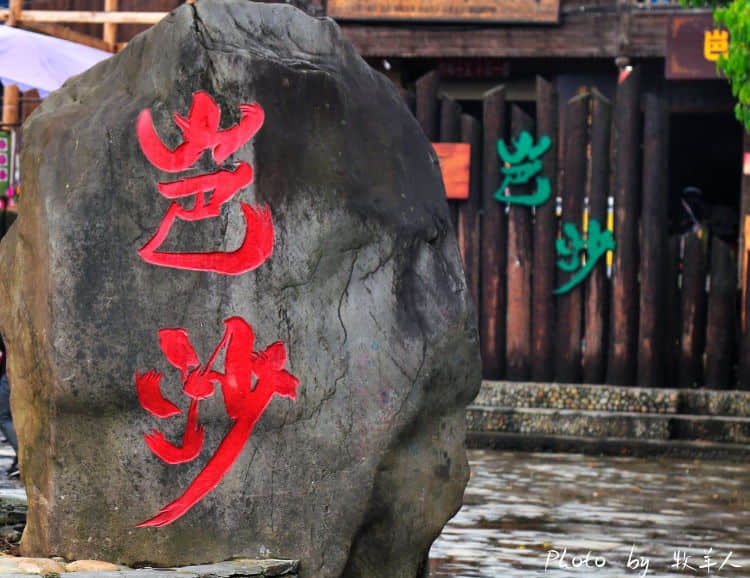
The Miao ethnic group comprises over 100 branches, historically named based on the color of their attire, such as Black Miao, White Miao, and Red Miao. Biasha Miao Village belongs to the mysterious Black Miao. This ancient tribe resides and thrives in Congjiang County, Guizhou, preserving one of the most intact ancient Miao tribes in China. The village consists of five natural hamlets: Dazhai, New Zaige Village, New Darongpo Village, Wangjia Village, and Zaizhuang Village.
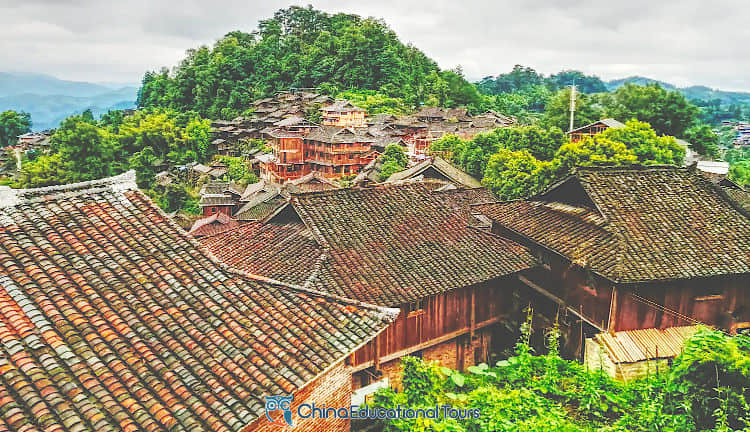
- Chinese name: 岜沙苗寨 bā shā miáo zhài
- Duration: 2-3 hours
- Opening Hours: 8:00 - 18:00
- Entrance fee: 80 Yuan
- Best Activities to do: Watch performance, photography
- Best time to visit: All year round
- Address: Biasha Miao Village, Bingmei Town, Congjiang County, Qiandongnan Miao and Dong Autonomous Prefecture, Guizhou Province
- How to get there: 1) High-speed Rail: From Guiyang North Station to Congjiang High-Speed Train Station, then to Biasha Miao Village. 2) Bus: From Guiyang to Congjiang Bus Station. 3)Self-driving: Approximately 5 hours from Guiyang.
The Firearms of Biasha Miao Village

While firearms are often associated with war and violence, in Biasha Miao Village, they represent heritage, peace, and hope. Although China has implemented a comprehensive gun ban, Biasha Miao Village is likely the only village in China where individuals are permitted to carry firearms. The Biasha people's firearms are specifically authorized by the government, with over 80% of households possessing gun licenses. This village is also known as the "Warrior Tribe of China."
The Tree Culture of Biasha Miao Village
The name "Biasha" means "abundant forests" in the Miao language. The Biasha people believe their peaceful and harmonious lives are due to the protection of the forest. They deeply respect trees and have established strict rules for their preservation.
Every person in Biasha has three significant trees in their lifetime.
-
Life Tree 生命树: Upon a child's birth, their parents plant a "Life Tree" on the mountain, symbolizing the newborn's life.
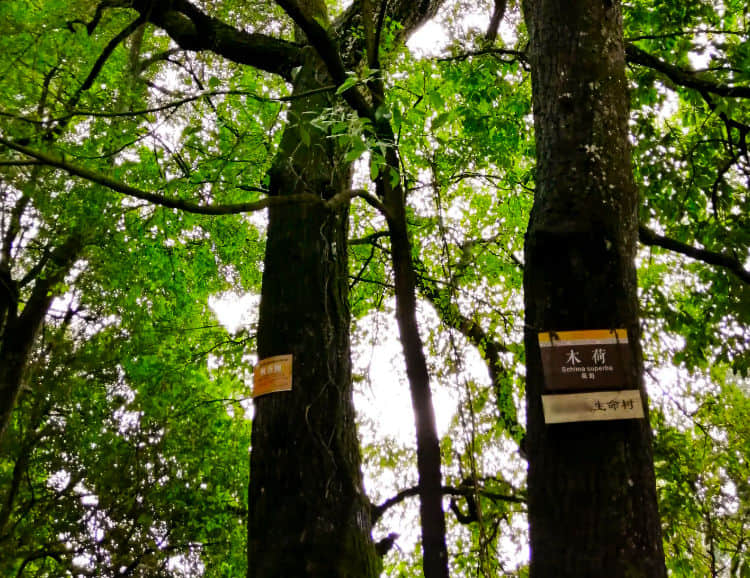
-
Disaster-Eliminating Tree 消灾树: Before reaching adulthood, the village elders designate a wild tree for each child as a "Disaster-Eliminating Tree," which they worship for blessings.

-
Eternal Tree 常青树: When a person passes away, a small tree is planted at their burial site. This allows the deceased's soul to reside in the tree through its roots, continuing their life in another form and protecting their descendants.

Tomb Sweeping Day is traditionally a day for ancestor worship and tomb sweeping. However, in Biasha, there are no tombs or tombstones. The Biasha people worship ancient trees to seek the protection of their ancestors. Burning incense and worshipping trees is their way of honoring their ancestors, and this ritual is not limited to Tomb Sweeping Day but can be performed whenever needed. Trees are considered sacred by the Biasha people.
The Attire of the Biasha People

Men wear self-woven, collarless, right-opening, high-waisted jackets with copper buttons, black straight-leg trousers, and carry a sickle. They also wear embroidered pouches and long embroidered belts around their waists, resembling ancient warriors. Japanese ethnologists and folklorists, tracing their roots, have visited Qiandongnan and shown great interest in the Biasha people. The similarities between Japanese samurai attire and Biasha clothing have led some to believe that the ancestors of the Japanese may have originated from Biasha.
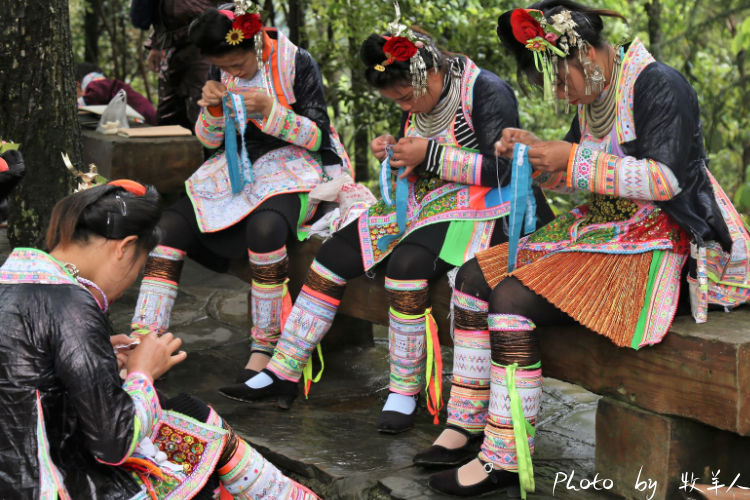
Women wear black attire with intricately embroidered patterns, pleated skirts, silver necklaces, and silver bracelets. They adorn their hair with seasonal flowers, creating a vibrant spectacle under the sunlight. From planting and weaving cotton to dyeing, sewing, and embroidering, the women of Biasha complete every step of garment creation themselves. It typically takes two years to finish a complete outfit.
Speaking of Biasha clothing, it's important to mention ramie, a crucial crop for the Biasha people. Ramie, known as "Nao" in the Miao language, is a perennial herbaceous plant with a growth cycle of 3 to 5 years. It is a high-quality fiber plant, internationally recognized as "China Grass" and considered the "King of Natural Fibers." Ramie cultivation has a long history, dating back to the Neolithic Age around 4700 years ago in the middle and lower reaches of the Yangtze River. Despite wars and migrations, the Biasha people have maintained the tradition of ramie cultivation to this day.
Hairstyle Culture
In Biasha Miao Village, both men and women maintain a distinctive hairstyle.
Male Hairstyle - Hu Gun
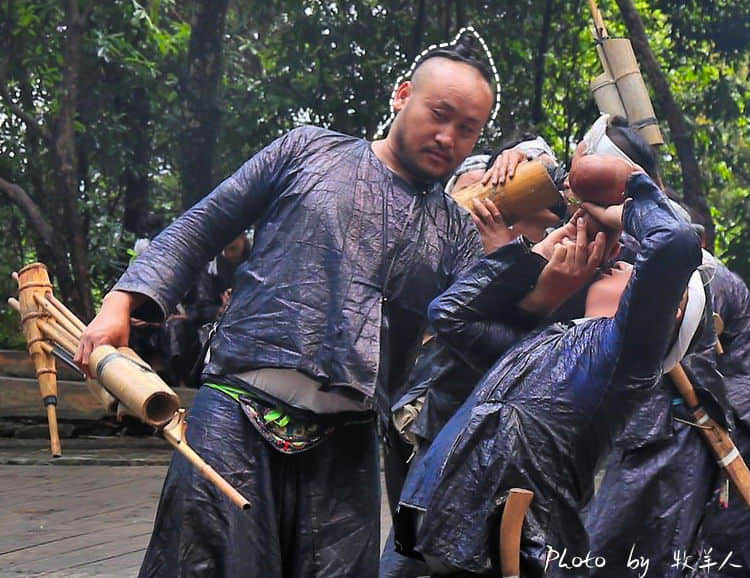
Biasha Miao men have a unique hairdo, with the sides shaved and the top of the head styled into a topknot, it is known as "Hu Gun 户棍" in Hmong, where "Hu" signifies the head and "Gun" represents the knot itself. It is referred to as "Jiū Jiū 鬏鬏".
What special significance does the "hu gun" hairstyle have?
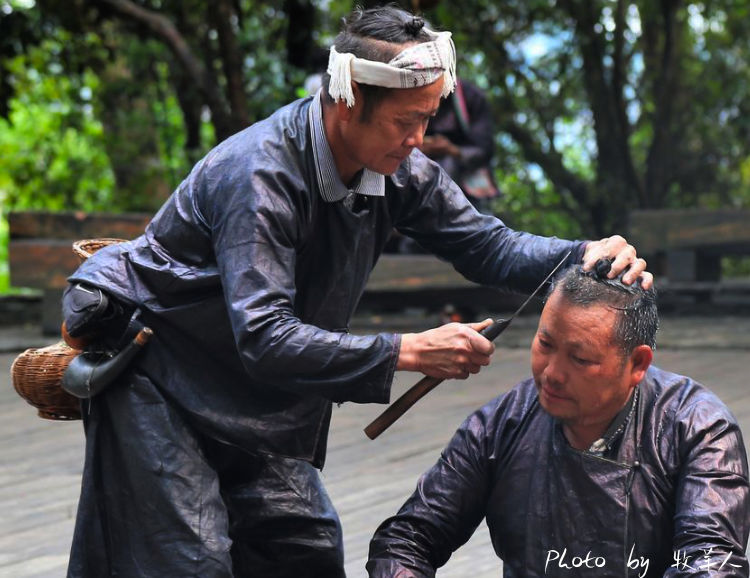
Biasha boys begin growing their hair from the age of three. Between the ages of 15 and 21, their families choose an auspicious day to conduct a coming-of-age ceremony. A crucial element of this ritual is the "shave hair with a sickle." On the day of the ceremony, the village elder is invited to officiate. Using a sharpened sickle, the elder shaves the hair around the boy's head, leaving only the central portion to be styled into the traditional topknot. This hairstyle, maintained for life, is said to resemble the shape of a tree, reflecting the Biasha people's profound reverence for trees. It is considered the oldest surviving male hairstyle in China.
Female Hairstyle

Women of Biasha also sport intricate hairstyles. Their long hair is gathered and secured atop their heads with silver combs, forming a slanted bun adorned with flowers and silver ornaments.
Surnames of Biasha
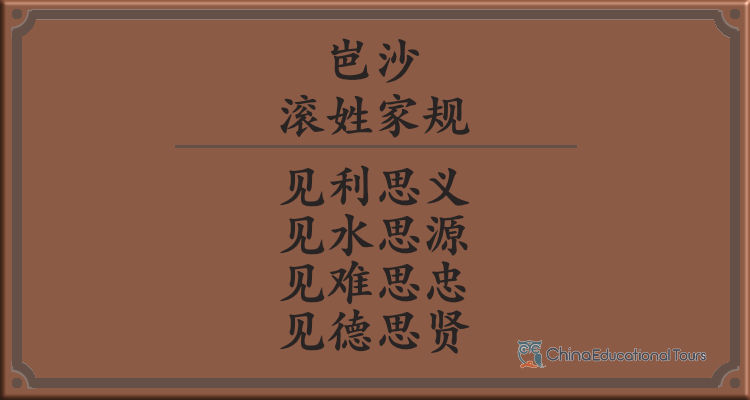
Biasha Village is home to a diverse range of surnames, with the most prominent being Gun 滚, Wang 王, Jia 贾, Wu 吴, Yi 易, Jiang 蒋 and etc. The Gun clan boasts the largest population and is among the earliest families to settle in Biasha. All residents are of Miao ethnicity, preserving their traditional culture and way of life.
The Lusheng Festival
The Lusheng Festival 芦笙节, held annually in December, is a joyous occasion for the Biasha people to celebrate a bountiful harvest. Historically, it also served as a romantic opportunity for young people to express their affections and connect with one another.

A popular Hmong proverb states, "Songs never leave the mouth, and the Lusheng never leaves the hand," highlighting the instrument (Lusheng)'s central role in Miao culture. Originally crafted from reeds, the Lusheng has undergone continuous refinement and innovation throughout generations. The Biasha Lusheng is unique, featuring only six bamboo pipes.
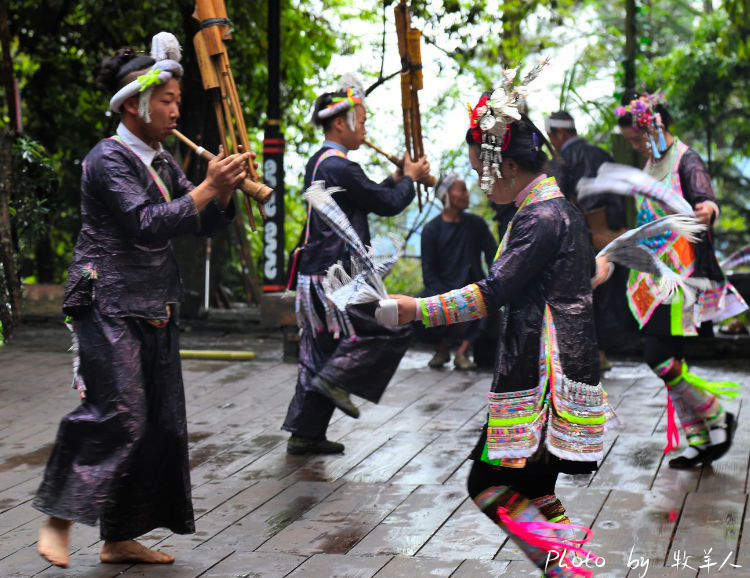
During the Lusheng Festival, villagers gather in their finest attire. Young men play the Lusheng, while women sing Miao folk songs and dance gracefully to the melodies, creating a vibrant and lively atmosphere. Visitors are encouraged to join the "Caitang Dance 踩堂舞," a joyful and energetic dance that mimics the movements of Biasha farmers working in the fields.
Biasha Miao Village's Cuisine
Basha Miao Village is famous for its unique cuisine, including sour soup fish, cured meats, grilled fish, pickled meats, pickled fish, and oil tea fried noodles, with sour soup fish being particularly renowned for its unique flavor and health benefits.
Basha Miao Village was recommended by China National Geography as one of the "55 Must-Visit Destinations in a Lifetime". Visitors can experience the authentic Black Miao culture and way of life by visiting Basha Miao Village.
Drop us a line and we'll connect you with the top China expert in no time!
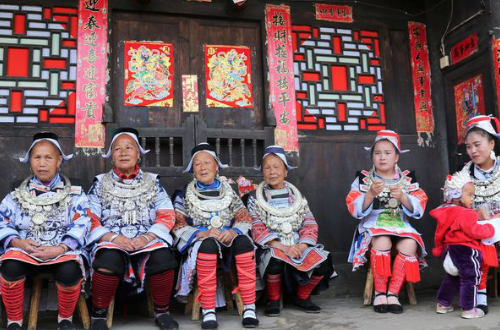 Guizhou Matang Gejia Village
Guizhou Matang Gejia Village 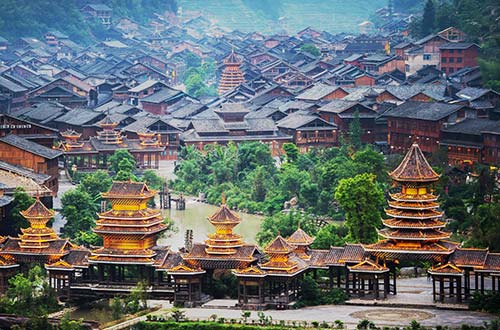 Guizhou Province
Guizhou Province 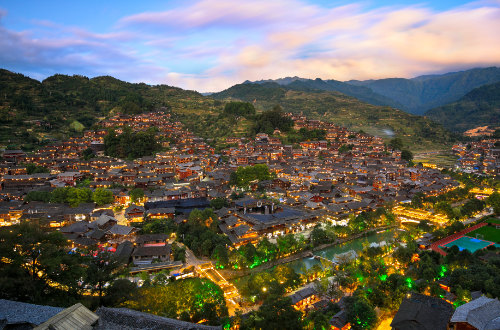 Guizhou Charms Unveiled in 3 Days
Guizhou Charms Unveiled in 3 Days 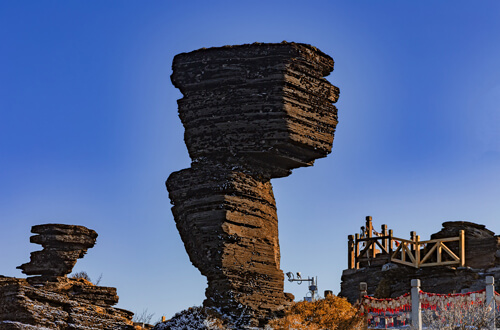 Miao Cultures & Mount Fanjing
Miao Cultures & Mount Fanjing